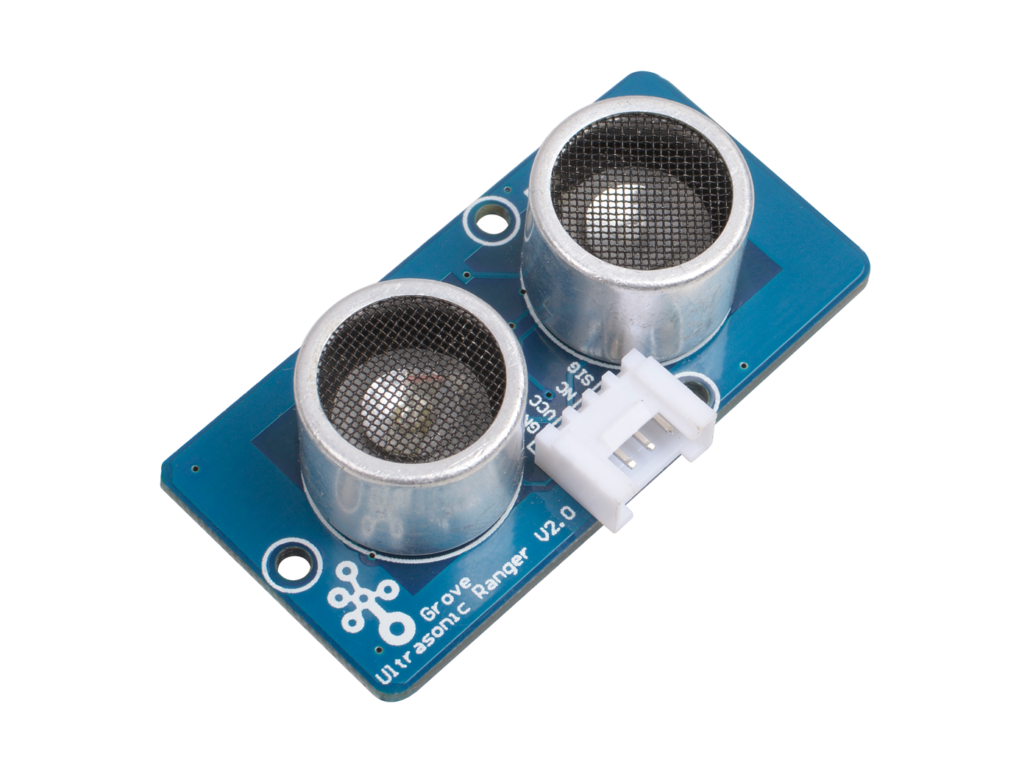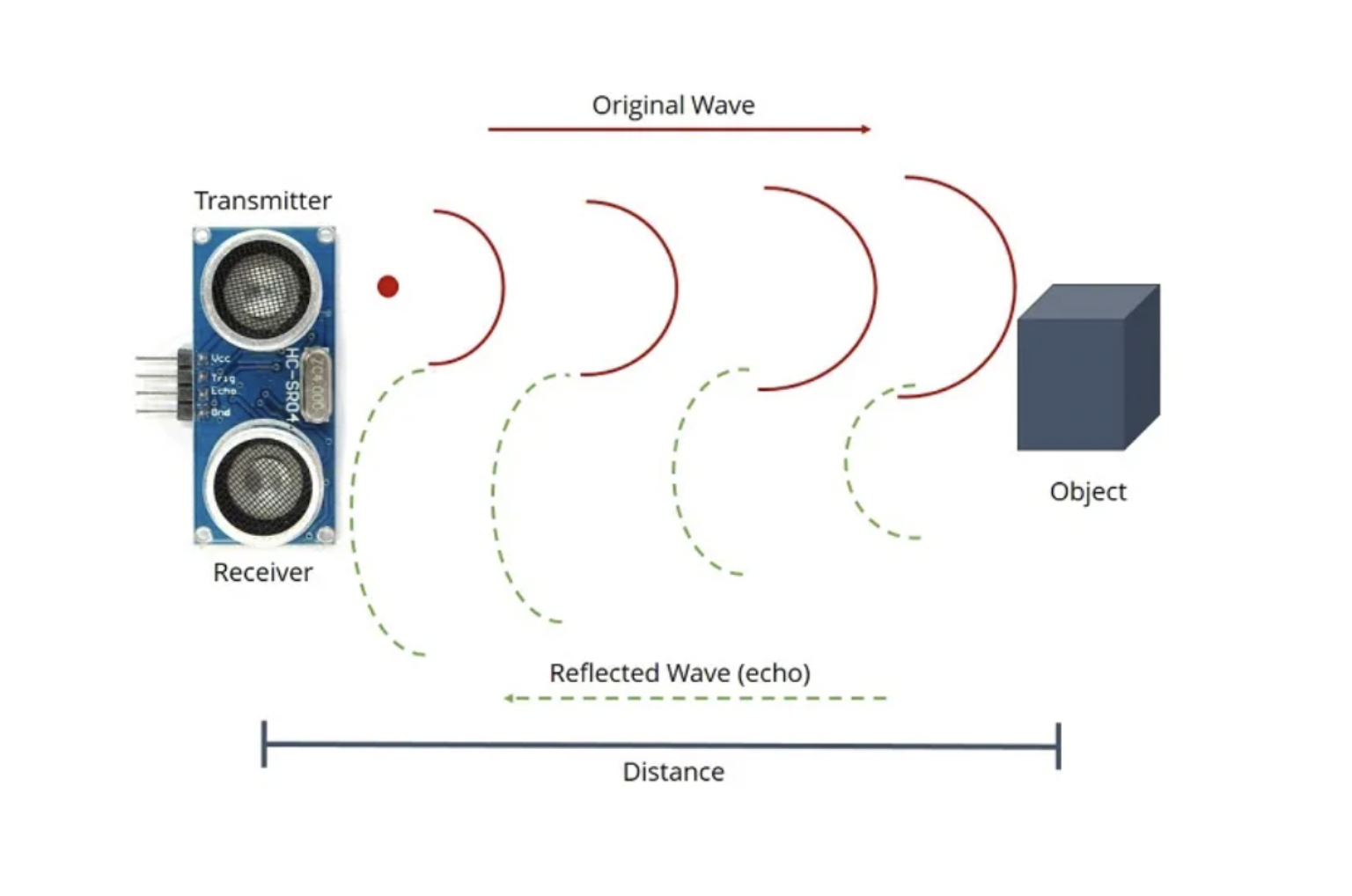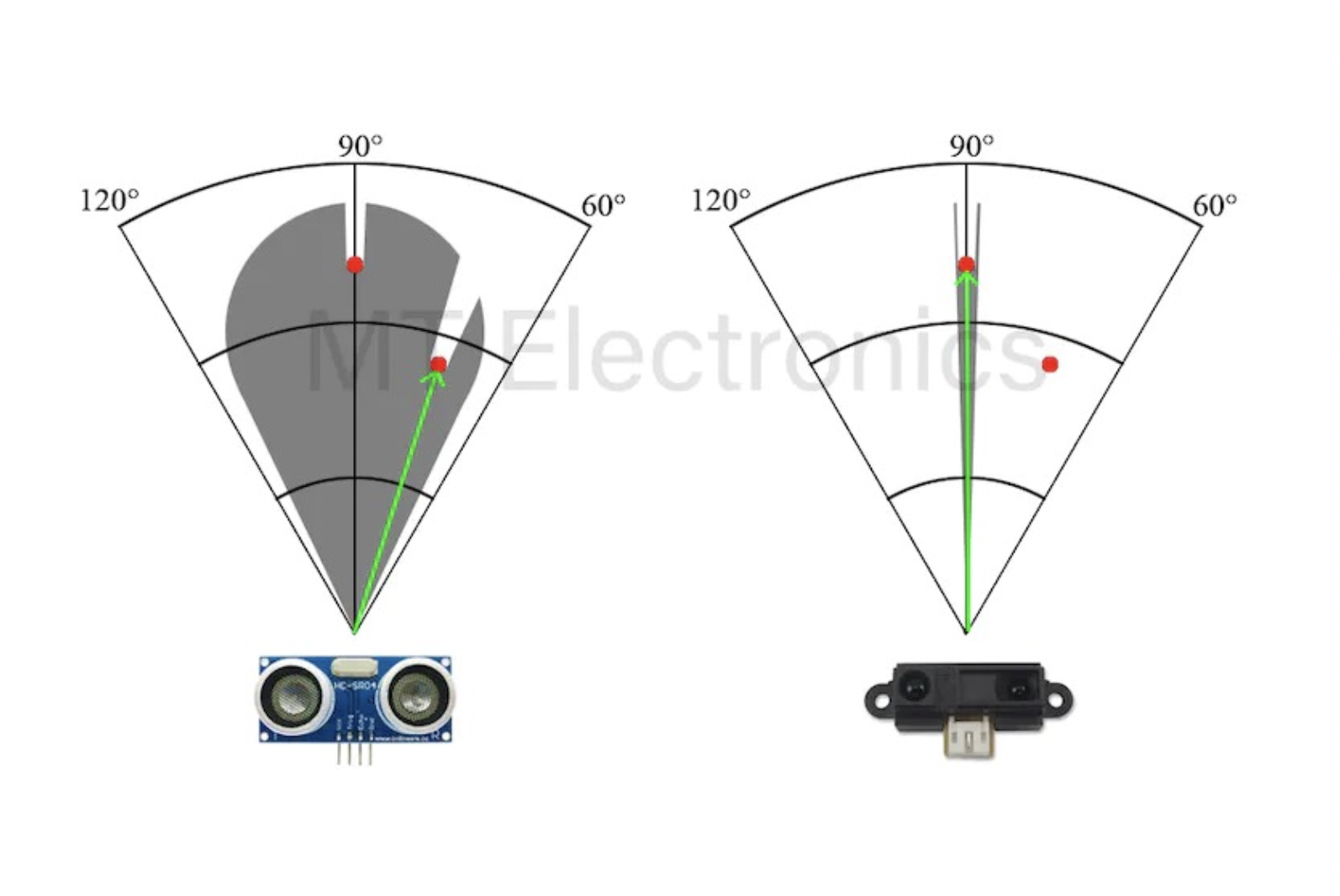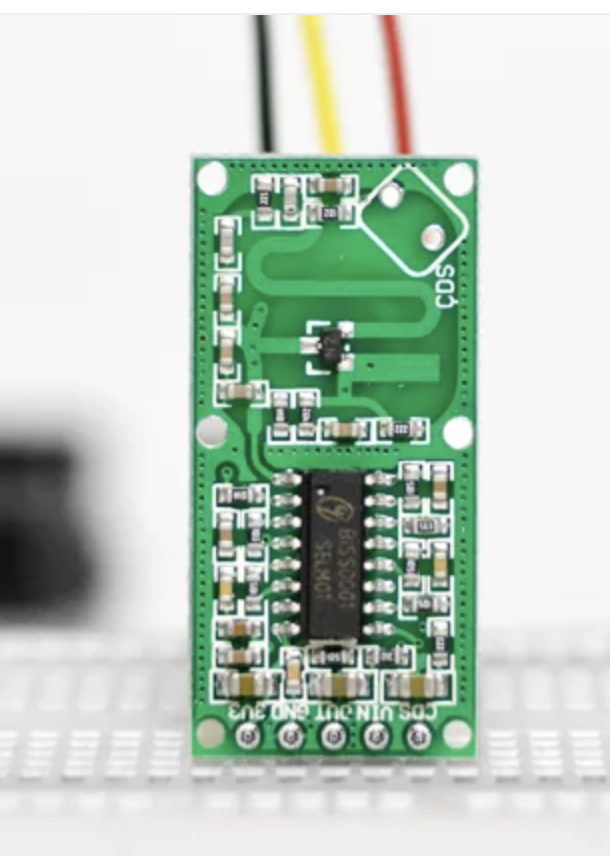Motion Tracking with Sensors for Microcontrollers
Research by Blackbox into various sensors that can used with microcontrollers to track persons, objects, colours or other motions. What kind of differents sensors are there to use and what are the pro’s and con’s of each sensor?
Sensors of Interest:
Sensing Distance and Proximity:
- Ultrasonic Sensor
- Infrared Sensors / IR
- PIR Motion Sensor
- Microwave Doppler Radar Sensor
More advanced sensing:
- LiDAR,
- ToF, Time-of-flight sensors
- HuskyLens AI Vision
Can also be used:
- LDR Photocell sensors
- Capacitance sensors
- PhotoDiodes
Ultrasonic Sensor
Example project
The Ultrasonic Sensor is arguably the most common distance measuring sensor, also known as the Sonar sensor. It detects the distance to objects by emitting high-frequency sound waves. The object needs to be in line with the sensors not so wide range. Used a lot in DIY distance measurement projects, robotics, smart cars, drones. Most common used sensor is the HC-SR04.
+
- not affected by colour object or transparency.
- Works well in dim places
-
- limited detection range
- Not good in tracking fast objects
- Unable to measure objects with extreme textures or surfaces.
Detection is good for example; knowing if someone ‘entered’ the space and switch on video. Not so good for when you want one or multiple persons tracked.
Infrared Sensor (IR)
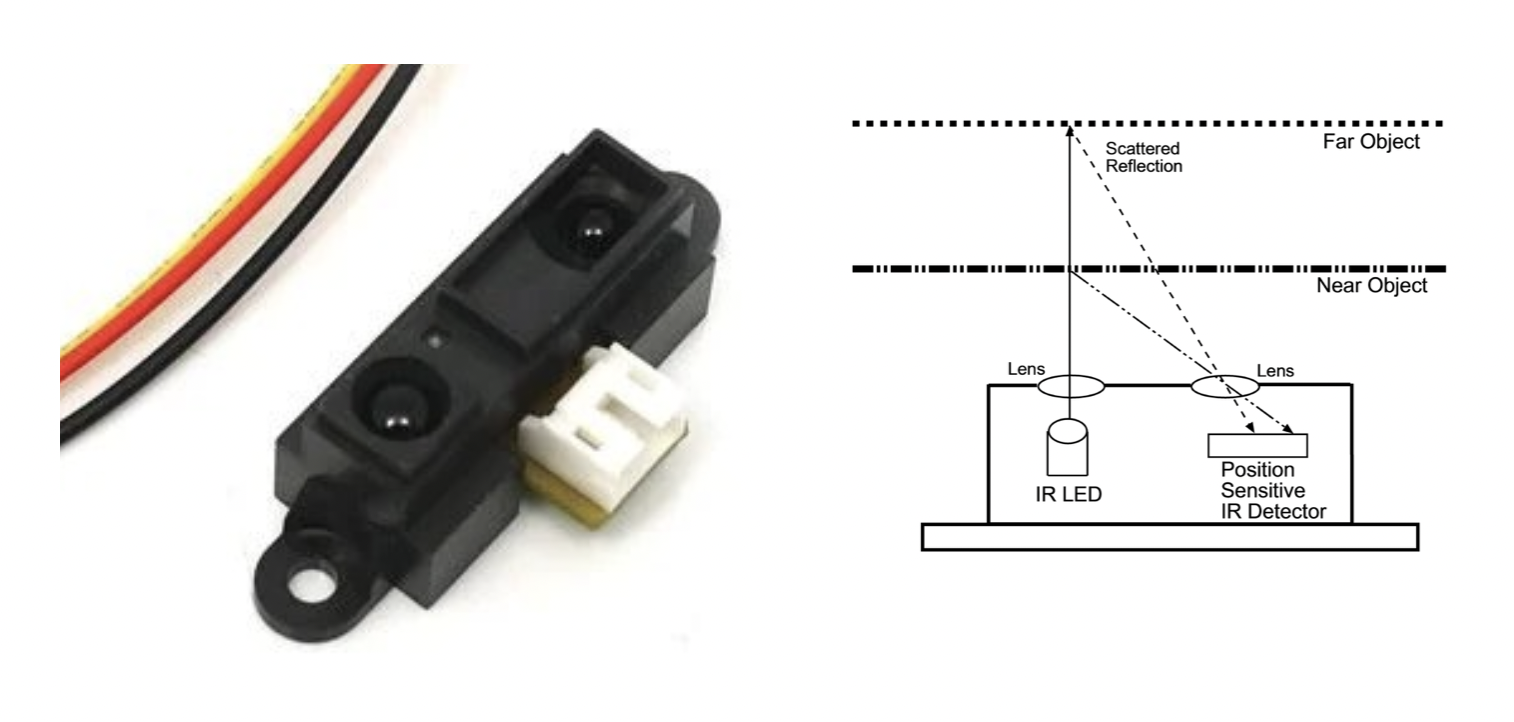
Example project
IR distance sensors work through the principle of triangulation; measuring distance based on the angle of the reflected beam. Used a lot in TV’s, computers and laptops, distance measurement projects, security systems, monitoring and control applications.
Recommended sensor: 80cm Infrared Proximity Sensor - GP2Y0A21YK
+
- Small size
- Daytime and Nighttime usage
- Able to measure the distance of objects that have complex surfaces unlike ultrasonic sensors
-
- Limited measurement range
- Affected by environment conditions and hard objects
PIR Motion Sensor
Example project
Passive infrared (PIR) sensors are sensitive to infrared (IR) rays and are mostly used for motion detection where humans move in or out of the sensor range.
Used a lot in appliances and gadgets for home or business (room detection). Also in DIY projects.
All living objects, whose body temperature is more than 0°C, emit the heat in form of infrared radiation through their body, also called as thermal radiations. This Radiated energy is invisible to human eye. These Signals can be detected by using PIR sensor which is specially designed for such purpose.
PIR sensor i.e. Passive Infrared Sensor, passive word indicates PIR Sensor does not generate or radiate any energy for detection purposes. PIR Sensors don't detect or measure "HEAT"; they detect the infrared radiation emitted or reflected from objects.They are small, inexpensive, low power and easy to use. They are commonly found at home, medical, factories etc. areas.
Link to more info about PIR sensors
Microwave Doppler Radar Sensor
For most of our Arduino projects that require knowing if someone has left or entered the area, the PIR sensor is an excellent choice. However, because they only detect movement from living things, they will generate fewer false alarms.
This is where a microwave sensor like the RCWL-0516 comes in handy. The RCWL-0516 microwave sensor detects any movement from any object and does not rely on heat signatures, making it more reliable in hot environments where a PIR sensor may not be as effective.
More about Doppler Microwave sensors here
 And a tutorial explaining the RCWL-0516 Microwave Doppler Radar sensor and running a beginner test can be found here by CircuitDigest .
And a tutorial explaining the RCWL-0516 Microwave Doppler Radar sensor and running a beginner test can be found here by CircuitDigest .
Lidar TF Luna
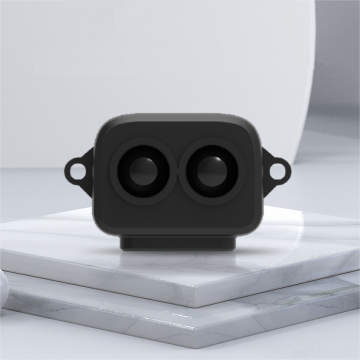
TF-Luna is a single-point ranging Lidar based on the TOF principle. With its unique optical and electrical design, it adopts an 850nm infrared light source to achieve stable, accurate, and highly sensitive distance measurements.
More information here
Lidar TF Luna Sensor example project

